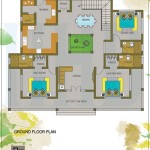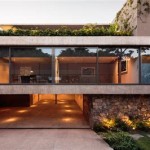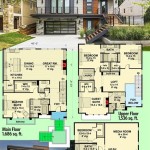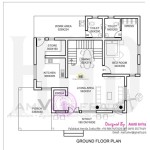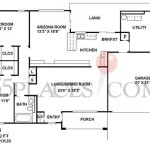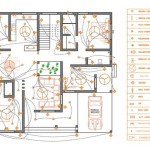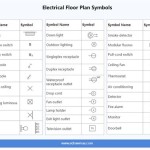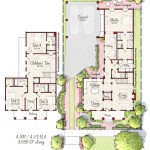Exploring the Charm and Functionality of Ranch House Floor Plans
Ranch house floor plans, also known as ranch-style or rambler floor plans, represent a prominent architectural style in American residential design. Characterized by their single-story construction, open layouts, and connection to the outdoors, ranch homes offer a unique blend of comfort, accessibility, and timeless appeal. These homes, which gained popularity in the mid-20th century, continue to be sought after for their practicality and adaptability to various lifestyles.
Understanding the defining elements of ranch floor plans is essential for anyone considering building, buying, or renovating a home in this style. The specific features and adaptations can vary, but core principles consistently shape the design and functionality. This article will delve into the key aspects of ranch house floor plans, covering their characteristic features, common variations, and the enduring benefits they provide.
Key Point 1: Defining Characteristics of Ranch House Floor Plans
Ranch homes are typically built on a single level, eliminating the need for stairs and making them accessible to individuals of all ages and physical abilities. This characteristic is a significant advantage for older homeowners, families with young children, and individuals with mobility limitations. The absence of stairs contributes to a smoother flow throughout the house, promoting safety and ease of movement.
The layout of a ranch home often features an open concept design, especially in the main living areas. The kitchen, dining area, and living room are frequently interconnected, creating a spacious and inviting atmosphere. This open layout encourages social interaction and provides ample room for entertaining guests. It also allows for better natural light distribution throughout the home.
Ranch homes typically have a low-pitched roofline, contributing to their horizontal and elongated appearance. This roof design is often paired with wide eaves, which provide shade and protection from the elements. The low roofline also helps to reduce energy consumption by minimizing the surface area exposed to direct sunlight and wind.
Large windows and sliding glass doors are common features in ranch homes, connecting the interior spaces to the outdoors. These openings allow for ample natural light and ventilation, creating a bright and airy living environment. Sliding glass doors often lead to patios, decks, or backyards, extending the living space and encouraging outdoor activities.
Many ranch homes include an attached garage, often located on the side of the house. This feature provides convenient access to the home from the garage, particularly during inclement weather. The garage can also serve as a storage space for vehicles, tools, and other belongings.
Key Point 2: Common Variations in Ranch House Floor Plans
While core features define the ranch style, variations exist to accommodate different needs and preferences. One common variation is the split-level ranch, which incorporates multiple levels separated by short flights of stairs. This type of ranch home can provide more living space without significantly increasing the footprint of the house.
Another variation is the raised ranch, which features a partially above-ground basement. This type of home often has an entry foyer that leads to the main living level or the basement. The basement can be finished to create additional living space, such as a family room, bedrooms, or a home office.
The L-shaped ranch features two wings that meet at a right angle, creating an L-shaped footprint. This design allows for a more defined separation between living areas and bedrooms. The L-shape also creates a sheltered outdoor space, such as a patio or courtyard.
The U-shaped ranch features three wings that enclose a central courtyard. This design provides a private and protected outdoor space, ideal for entertaining or relaxing. The U-shape also allows for ample natural light and ventilation throughout the home.
The courtyard ranch is similar to the U-shaped ranch but features a fully enclosed courtyard, often accessible from multiple rooms in the house. This design creates a strong connection between the interior and exterior spaces, offering a unique living experience.
Ranch homes can also vary in size, from small starter homes to larger family residences. The size of the home will influence the number of bedrooms, bathrooms, and living areas. Larger ranch homes may include features such as a formal dining room, a home office, or a bonus room.
Key Point 3: Enduring Benefits of Ranch House Floor Plans
The single-story design of ranch homes offers significant accessibility benefits. The absence of stairs makes these homes suitable for individuals of all ages and physical abilities. This accessibility is particularly important for older homeowners who may have difficulty navigating stairs and for families with young children who may be at risk of falling.
The open layout of ranch homes promotes social interaction and creates a sense of spaciousness. The interconnected living spaces allow for easy communication and movement between rooms. This open concept design is ideal for entertaining guests and spending time with family.
Ranch homes are relatively easy to maintain due to their simple construction and single-story design. The low-pitched roofline and wide eaves help to protect the exterior of the home from the elements. The absence of stairs simplifies cleaning and repairs.
Ranch homes are often energy-efficient due to their low roofline and ample insulation. The large windows and sliding glass doors allow for natural light and ventilation, reducing the need for artificial lighting and air conditioning. Many ranch homes also incorporate energy-efficient features such as solar panels and energy-efficient appliances.
Ranch homes are adaptable to various lifestyles and can be easily renovated to meet changing needs. The open layout allows for flexible use of space, and the single-story design makes it relatively easy to add additions or modify existing rooms. This adaptability makes ranch homes a good investment for the future.
Ranch homes often have a strong connection to the outdoors, with large windows and sliding glass doors that provide views of the surrounding landscape. Patios, decks, and backyards extend the living space and encourage outdoor activities. This connection to nature can enhance the quality of life and promote well-being.
The aesthetic appeal of ranch homes is timeless and enduring. The simple lines, low profile, and emphasis on horizontal space create a sense of harmony and balance. Ranch homes can be easily customized to reflect individual tastes and preferences, making them a versatile choice for homeowners.
Ranch house floor plans offer a blend of practicality, comfort, and style. Their defining characteristics, common variations, and enduring benefits make them a popular choice for homeowners seeking a functional and adaptable living space. By understanding the key aspects of ranch home design, individuals can make informed decisions about building, buying, or renovating a home in this enduring style.

Affordable Ranch House Plan 1453

Tierney Ranch House Plans Luxury Floor

4 Bedroom Classic Ranch House Plan With Covered Porch

Ranch House Plans With Open Floor Blog Homeplans Com

Cc7cfe14890a9ffd257085e02d4dbfd7 Gif 700 525 Ranch House Floor Plans Style

House Plan 85004 Quality Plans From Ahmann Design

Lewisburg Ranch An Affordable House Plan 2808
Trending Ranch Style House Plans With Open Floor Blog Eplans Com

Simple To Build Ranch Home Plan 81317w Architectural Designs House Plans

Ranch House Plans That Rock Houseplans Blog Com

